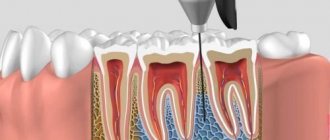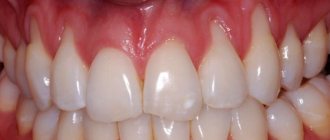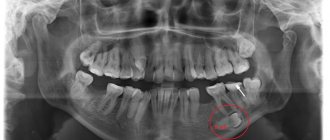New conditions for federal medical institutions
On January 1, 2022, a law came into force that transferred the insurer’s powers in relation to federal medical institutions (FMU) to the Federal Compulsory Health Insurance Fund (FFOMS).
Accordingly, monitoring the quality of medical care and protecting the rights of patients of federal-level medical organizations should have become the prerogative of the FFOMS. “However, according to the official website of the Unified Information System in the field of procurement, throughout this year, patients of federal medical institutions were left without planned quality control of the care provided to them by the FFOMS, since the examination of the quality of medical care in the FMU will begin only in 2022,” - noted in the VSS.
At the same time, the interests of patients of regional medical institutions (and this is the vast majority of hospitals and clinics) are still protected by the insurance companies that issued them compulsory medical insurance policies. According to the ARIA, from January to October 2022, insurance companies conducted 24.1 million examinations and identified 3.5 million violations by doctors. The vast majority of these relate to non-compliance with standards of care and clinical guidelines.
Insurance companies, on the direct instructions of the FFOMS, still continue to work with complaints from patients of federal clinics. However, as noted by the ARIA, the real possibilities of insurance companies to restore and protect the rights of patients of federal medical institutions are limited, since no agreement has been concluded between the FMU and insurance companies for the provision and payment of medical care.
How much does it cost to install a light seal?
In order to most accurately tell you how much it costs to get a light filling, you need to understand what type of filling will be installed, as well as where exactly the treatment will take place. The cost of a light filling in a state clinic starts from 900 rubles. As a rule, this is a medium quality composite material intended for the restoration of chewing teeth. In private dental clinics in Moscow, the price of a light filling starts from 1,500 – 2,000 rubles. Light fillings for front teeth are more expensive: for aesthetic restorations, the price can exceed 3,000 rubles.
In-depth medical examination after coronavirus
From July 1, 2022, those who have recovered from COVID-19 can undergo a free in-depth medical examination to identify possible “post-Covid” complications. First of all, patients with chronic diseases who have had a moderate or severe form of coronavirus infection are examined in depth. You can undergo an in-depth medical examination 60 days after the patient has recovered from COVID-19. At the same time, the VSS emphasizes that medical examination can also be completed on the initiative of the citizen himself.
As noted by Svetlana Kravchuk, deputy chairman of the Federal Compulsory Medical Insurance Fund, today, for some insurance companies, the response to an invitation to undergo medical examination has increased to 38% compared to 2% in the summer months.
You can sign up for an in-depth medical examination at the clinic at your place of residence or on the government services portal, the BCC reminded. If the clinic refuses to accept a patient, you can contact your insurance representative using the phone number of your insurance company (indicated on the compulsory medical insurance policy).
How does the installation work?
- Using a drill, the tooth is slightly ground down for better adhesion of the filling to the tooth.
- Thorough treatment with antiseptic drugs.
- Applying a special filling substance to the tooth, evenly distributing the composition.
- Polymerization using a blue lamp.
- At the end of the procedure, sanding and polishing are carried out to make the unit as similar as possible to the rest.
On average, installing a light seal will cost 4-7 thousand. Some clinics often hold promotions, thanks to which you can restore a tooth at a reduced price.
Automatic notification through government services
From July 1, 2022, information on medical care provided to the insured citizen and his minor children will be available on the Unified Portal of State and Municipal Services.
It will be possible to see in detail what kind of help and when a person received on an outpatient basis, in a day hospital, inpatiently, outside a medical organization. In addition, the citizen will receive full information about the cost of medical care provided to him under compulsory medical insurance, despite the fact that all services were free for him. The results of control and expert activities of the insurance company will also be available (information on the nature of violations in the provision of medical care).
As explained by VSS expert Sergei Shkitin, if there is a need for clarification of identified violations and if “additions” are discovered, a citizen can contact his insurance company.
Treatment of caries in the Lazarevsky district of Sochi
- What is caries?
- What determines the cost of caries treatment?
- Why does food get stuck between teeth?
- The service life of a filling and what does it depend on?
- The seal is stained around the edges. Does it need to be changed?
- Why does a filling fall out?
- Why shouldn’t you wait for the filling to “grind in” on its own if it is too high for your bite?
- Which filling is better?
- What is better, a filling or an inlay?
- Why do fillings change color over time?
- Why is it necessary to restore a tooth with a pin?
1) What is caries?
Caries is the most common disease known (97%).
People have suffered from tooth decay and its complications for many centuries (you can even remember the American president with a $100 bill). So what is it? In simple terms, caries is the destruction of hard tooth tissue. And the reason for its appearance is simple: food debris stuck to the teeth and not cleaned off with a toothbrush in time is an excellent environment for bacteria to live and reproduce. The acids released by them affect the tooth enamel, causing damage to it. The enamel becomes loose and weakened, and bacteria, breaking through this barrier, penetrate deeper, destroying the tooth from the inside.
Often, caries can be compared to an iceberg. On the enamel side we see slight damage, but inside there is a much larger cavity. And the larger it is, the more difficult dental treatment can be. At the same time, caries detected at an early stage is easier and cheaper to treat.
That's why we recommend not to neglect prof. examinations once every 6 months.
How to treat caries?
Caries is destroyed, non-viable tooth tissue. Unfortunately, it is no longer possible to return them to a healthy state, but with the modern development of technologies and materials in dentistry, caries treatment is a simple and painless procedure.
First of all, it is important to clean the tooth of all damaged tissue, and then fill the formed cavity with filling material, and restore the functional and aesthetic integrity of the tooth.
The seal can be made in two ways:
- If the carious process is relatively small, then the tooth can be restored in one visit by placing a photopolymer filling.
- If the cavity is very large, affecting 2 or more surfaces of the tooth, then the dentist may recommend that you restore the tooth with a ceramic or composite inlay. Such a tab will be more functional, reliable and durable.
2) What determines the cost of caries treatment?
Treatment directly depends on the severity of the disease. Treating caries in the early stages is much easier, faster and cheaper. The longer a patient delays visiting a doctor, the more the tooth is destroyed, and the more expensive its treatment can be.
The cost of caries treatment in the Lazarevsky district of Sochi may depend both on the stage of tooth damage and on the materials and equipment that the dentist uses when working with the patient. A large number of dentists practice in Lazarevskoye, the prices and quality of their services vary greatly.
3) Why does food get stuck between teeth?
Normally, adjacent teeth are quite close to each other, which prevents large pieces of food from getting stuck between the teeth.
For a number of reasons, this contact can be weakened and is the cause of constant discomfort from food getting stuck. The most common reason is an incorrect filling. Firstly, the filling may not fit tightly enough to the adjacent tooth; secondly, a filling on a non-contact surface may have an overhanging edge, which will make it difficult to clean the interdental space. Another reason is periodontal disease (periodontitis), as a result of which the roots of the teeth are exposed, spaces appear between the teeth that are not protected by the gums, tooth mobility occurs, due to which the contacts between the teeth are weakened.
The next reason is malocclusion pathology, when the teeth are not positioned correctly, outside the dentition.
Be that as it may, if food gets stuck between your teeth, this is a reason to see a dentist. Since, in addition to constant discomfort, this can lead to caries and gum inflammation.
4) The service life of the filling and what it depends on.
The service life of a filling is the period after the expiration of the warranty period during which the filling meets aesthetic, clinical and functional requirements. That is, roughly speaking, this is the period of time between the placement of the filling and the need to replace it.
Service life depends on several factors:
1) The professionalism of the doctor and compliance with the filling technology, 2) Oral hygiene, depending on the characteristics of the bite. 3) Regular professional hygiene and grinding of fillings every 6 months.
I. We have already written about the importance of following all stages of the filling protocol. Unfortunately, the patient cannot track these stages because he is not familiar with all medical aspects, but there are nuances that are worth paying attention to:
1) The use of a rubber dam system, which allows you to ensure dryness and sterility of the working field, and the absence of micro-leakages. 2) Working with an assistant with 4 hands allows the doctor to fully concentrate on the treatment process. 3) The doctor’s use of caries markers, which allows, in doubtful cases, to make sure that all carious tissues have been removed. 4) The filling after grinding and polishing should not have sharp edges, the surface should be smooth. 5) If the filling is adjacent to an adjacent tooth, then the floss should pass between the teeth to the end, but with little force.
This is important so that food does not get stuck between the teeth.
II. Oral hygiene is a very important aspect of extending the life of any oral restoration, including fillings. Poor hygiene negates the efforts of the most highly qualified dentist, and caries can occur under an ideal filling. The patient must understand that if he was unable to keep his teeth healthy, then he should not expect that the dentist will be able to do better than what nature created, and forever.
III. Regular professional hygiene during which the dentist checks the fit of previously placed fillings and their grinding.
Any filling material experiences compensatory shrinkage over time. In photopolymer composites, the main shrinkage occurs at the moment the material is illuminated by a lamp, but during natural operation it still continues. After some time, the filling begins to “cling” and requires sanding. The filling-tooth boundary is the “weakest” place for recurrent caries.
During professional hygiene, plaque is also removed, which is fixed in places that are difficult to reach with a toothbrush, which also prevents recurrence of caries under the filling.
Thus, the service life of the filling depends on many factors, and if you follow all the doctor’s recommendations and there are no bite pathologies, it averages 5-7 years.
5) The seal is painted around the edges. Does it need to be changed?
The filling-tooth boundary is the “weakest” point of any filling. A change in the color of the edge of the filling can be caused either by staining with various dyes (tobacco, coffee, tea, etc.), or by the occurrence of relapse of caries in this place.
A dentist can evaluate the cause.
If it is just staining, then the filling can be sanded down to remove pigmentation. If the cause is caries, then it is better to replace the filling without waiting for the tooth to decay even more. Terekhova Tatyana
Dentist-therapist
Karapetyan Grigor
Dentist
6) Why do fillings fall out?
Modern pathologies and materials in dentistry make it possible to produce fairly durable restorations. But sometimes fillings fall out. If a filling falls out shortly after treatment, the reasons are usually the following:
- Violation of seal manufacturing technology
- Leakage of saliva during filling placement
As a rule, if this is the reason, then the filling falls out during the warranty period, and the doctor will replace the filling under warranty.
Other reasons may be:
- Recurrence of caries under a filling
- The occurrence of caries on another surface of the tooth and its spread under the filling
- Violation of the integrity of the seal itself during its natural operation
- Functional overload of the filling due to the patient’s incorrect (pathological) bite.
In any case, if a filling falls out, you should immediately consult a doctor.
7) Why shouldn’t you wait for the filling to “grind in” on its own if it is too high for the bite?
Fillings or ceramic inlays are usually placed under anesthesia. And often the patient cannot accurately understand whether the restoration immediately interferes with the bite. But after several meals you can feel it.
In this case, you should definitely contact your dentist to adjust the height of the filling or inlay.
Modern dental materials are highly durable, and the filling will not rub against the teeth.
But the appearance of pain when biting on a tooth, caused by overload of this tooth, is more than likely. In addition, due to the overestimation of the restoration, it is possible for it to chip.
 Which filling is better?
Which filling is better?
Our patients ask this question quite often. As a rule, they are interested in 2 aspects: photo filling or chemical curing and the manufacturer (Japan, Germany, etc.)
Let's look at it in order: of course, when choosing between a photo-curing filling and a chemical-curing filling, preference should be given to the first. Photocomposite material is more modern, and in its properties, including aesthetic ones, is head and shoulders above its predecessor.
As for the manufacturer of the materials, does this make sense for a patient who does not know how different fillings differ from each other? When placing a filling, what is much more important is not the manufacturer, but the observation of the technological treatment protocol.
Ensuring the working field (cofferdam system) is dry, removing all affected tooth tissue, as well as caries. A large number of other nuances.
As a result, the service life of any filling depends primarily on the skill of the doctor, and not on the manufacturer of the material. If there are important nuances, the doctor will definitely inform you about it.
9) Which is better, a filling or an inlay?
Filling - serves to restore tooth tissue lost as a result of caries. The development of modern materials makes it possible to create fast, aesthetic, functional and durable fillings.
But the modern filling still has a number of disadvantages:
- Compensatory shrinkage during material curing,
- The appearance of internal deformations in the material,
- With large defects, it is impossible to control the marginal fit along the entire border of the filling.
That is why, for large defects, the use of fillings is limited.
And this is where tabs come to the rescue.
An inlay is essentially the same filling, but made on a model in a dental laboratory.
To make inlays, either precious metals or ceramics are used. Ceramics are very similar in properties to tooth enamel.
A ceramic inlay glued to the tooth with special glue completely restores the strength of the tooth and its functionality. Also, the inlay manufacturing technology allows you to control the accuracy of the inlay’s fit to the tooth, avoid overhanging edges of the restoration, and ensure tight contact with adjacent teeth.
In many cases, when tooth decay is severe, but the tooth is still alive, an inlay is the only way to avoid crowning and depulping the tooth (nerve removal).
An inlay, unlike a filling, is made in two visits. During the first appointment, the doctor removes caries, creates a cavity, and takes impressions of the upper jaw and lower jaw. And a temporary filling is placed in the tooth. The impressions are sent to the laboratory, where a dental technician casts models and makes a ceramic inlay on the model. Ceramics are baked in an oven at a temperature of 1050-1100 degrees Celsius. At this moment, all compensatory changes in the material occur.
During the second visit, the doctor fixes the tab into the patient’s tooth. A ceramic inlay is not only stronger than a filling, it is also more beautiful, more practical, and more durable. Plaque does not settle on it, it does not change color over time and does not irritate the gums.
10) Why does the filling change color over time?
Modern materials used for filling teeth are light-curing composites. This material is durable, aesthetic, and allows you to solve many problems. But one of its drawbacks is that it “absorbs” dyes. Stained by coffee, tea, cigarettes and so on. Of course, this happens slowly, but a change in the color of the filling may cause it to be replaced (if it is, for example, a front tooth).
Another reason for a change in the color of the filling is the occurrence of caries under the filling. The tooth under the filling darkens and the filling changes color.
If you notice that the filling is changing color, you need to contact your dentist.
11) Why is it necessary to restore a tooth with a pin?
In case of severe tooth decay, after root canal treatment, it becomes necessary to create additional elements to fix the filling.
Intracanal pins help with this. A pin is fixed into one of the channels (the widest and straightest) with special cement. The cavity is then filled with filling material.
The clinic administrator will be happy to answer all your questions: | Make an appointment with a doctor at our clinic for an examination: |
| ORDER A CALL-CONSULTATION | MAKE AN APPOINTMENT |
Digital policy
An important innovation in 2022 for citizens will be the opportunity to refuse a compulsory medical insurance policy on a tangible medium (plastic card or paper document) and receive a digital policy with a unique bar code. An electronic policy can be issued from July 1, 2022, for example, by submitting an application on the government services portal.
Information about insured citizens is located in a unified register of insured persons, which, starting from the second half of 2022, will make it possible to receive medical care without using a plastic or paper policy. To receive medical care, it will be enough to present any identification document or the digital compulsory medical insurance policy itself. This innovation will save patients from bureaucratic costs, for example, when a document is lost.
Change of insurance company
Now, when changing the region of residence or stay, if a citizen has not applied to choose a new insurance company, he will be insured by the same insurance company as before. If there is no branch of his previous insurance company in the region of his new place of residence, then the selection of a new company will be carried out randomly by the territorial compulsory medical insurance fund.
From 2024, the insured citizen will no longer have the obligation to report changes in any personal data to his insurance company - all updates will be automated. This is due to the fact that the necessary information about the citizen (change of full name, place of residence or temporary stay) will be regularly updated in the Unified Register of Population Information.
Shkitin recalled that choosing an insurance company still remains an important right of citizens, since the quality of customer service and expert control will depend on this in the future. In the vast majority of regions of Russia, you can choose a medical insurer from three or four,” Shkitin noted.
Composition of the light seal
The vast majority of filling types are based on the use of a mixture of several materials. A filling made from a light-curing composite has a rather complex composition, which is partly why it costs more than its analogues.
Light seal materials
- Heliocomposite.
The basis of a light filling, which under the influence of an ultraviolet lamp breaks down into radicals, due to which polymerization (hardening) of the filling material occurs. - Filler.
This can be silicon dioxide, glass ceramics, etc. The structure, color and area of application of the filling depend on the type of filler. - Connecting elements.










